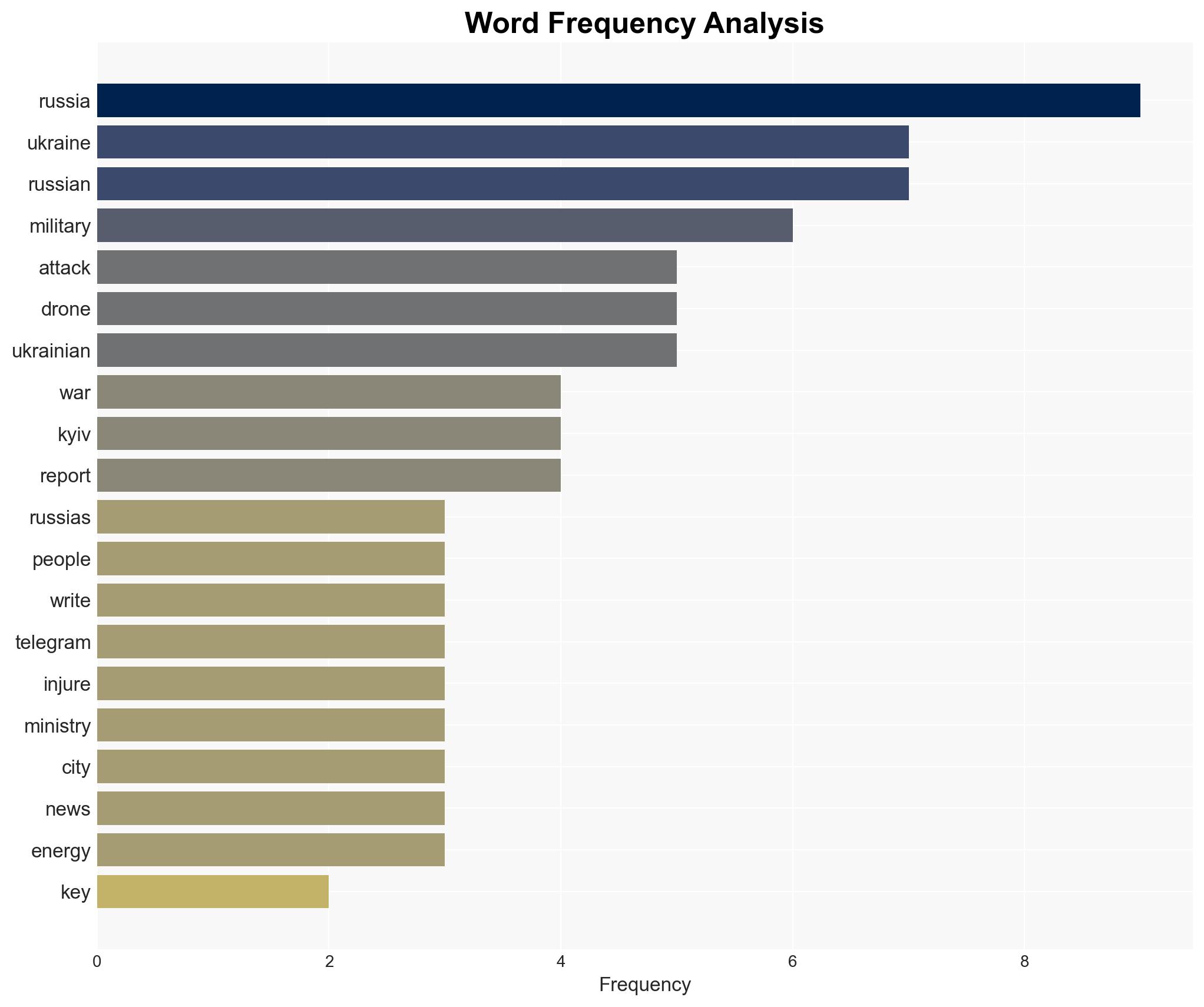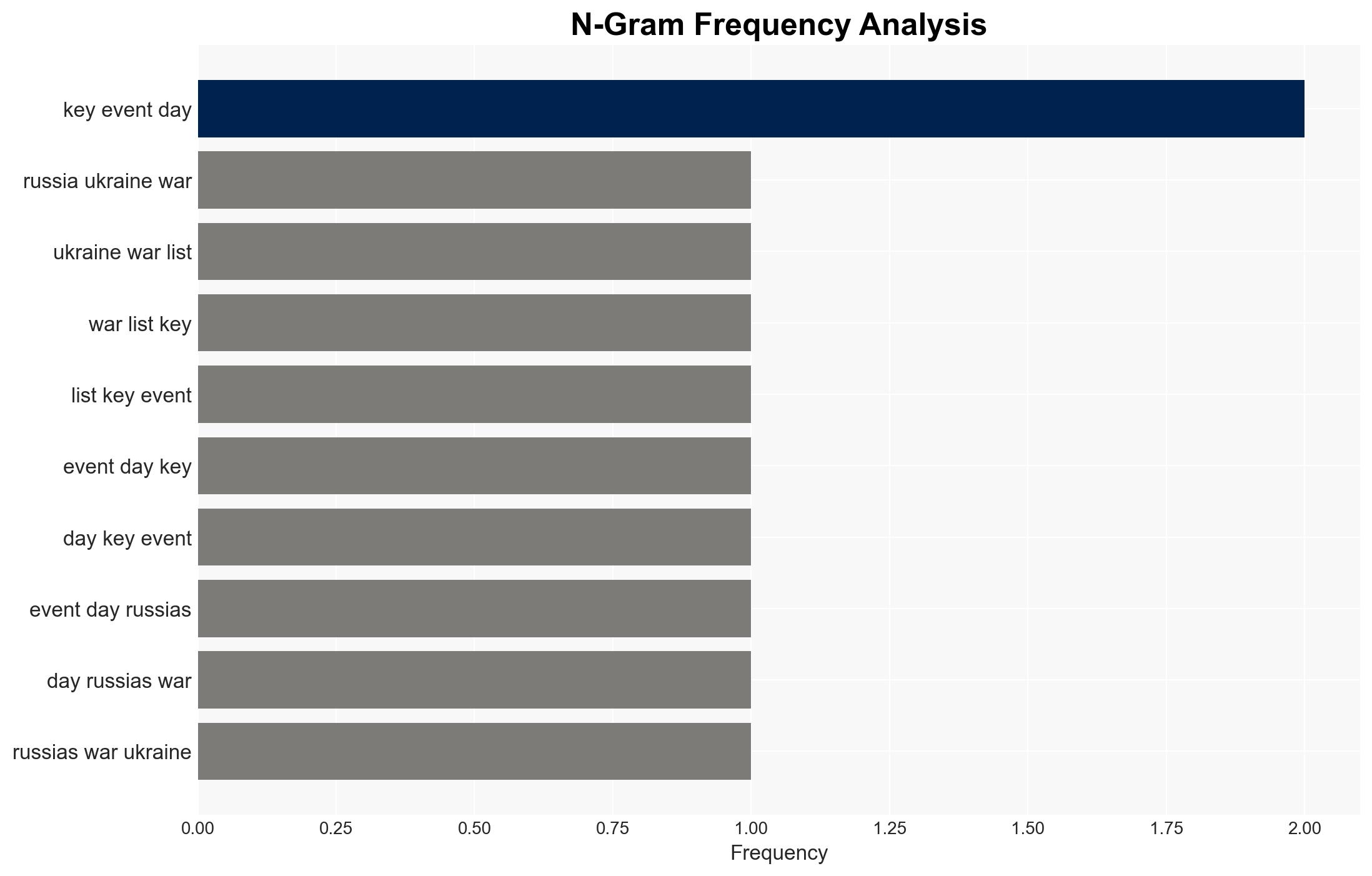Russia-Ukraine war List of key events day 1360 – Al Jazeera English
Published on: 2025-11-15
AI-powered OSINT brief from verified open sources. Automated NLP signal extraction with human verification. See our Methodology and Why WorldWideWatchers.
Intelligence Report: Russia-Ukraine war List of key events day 1360 – Al Jazeera English
1. BLUF (Bottom Line Up Front)
The strategic situation in the Russia-Ukraine conflict remains volatile with increasing international involvement and potential for escalation. The most supported hypothesis is that Russia is intensifying its military operations to consolidate territorial gains before winter, while Ukraine is leveraging international support to counter these advances. Confidence Level: Moderate. Recommended action includes enhancing diplomatic efforts to de-escalate tensions and increasing support for Ukraine’s energy infrastructure to mitigate winter hardships.
2. Competing Hypotheses
Hypothesis 1: Russia is escalating military operations to secure strategic positions before winter, aiming to strengthen its negotiating position in any future peace talks.
Hypothesis 2: Russia’s actions are primarily defensive, responding to perceived threats from NATO and Ukrainian advances, with the aim of maintaining current territorial control.
The first hypothesis is more likely given the reported intensification of Russian attacks and the strategic importance of securing positions before winter. Additionally, the involvement of North Korean soldiers in mine-clearing operations suggests preparation for sustained operations.
3. Key Assumptions and Red Flags
Assumptions include the continued capability and willingness of Russia to sustain military operations and the reliability of reported events. Red flags include potential misinformation from both Russian and Ukrainian sources, and the risk of misinterpretation of military movements as offensive rather than defensive.
4. Implications and Strategic Risks
The escalation of military actions could lead to increased casualties and further destruction of infrastructure, exacerbating the humanitarian crisis. There is a risk of broader regional conflict if NATO is perceived as directly involved. Cyberattacks and hybrid threats could destabilize regional security further, impacting European energy supplies and economic stability.
5. Recommendations and Outlook
- Enhance diplomatic channels to facilitate dialogue between Russia and Ukraine, potentially involving neutral mediators.
- Increase support for Ukraine’s energy infrastructure to prevent a humanitarian crisis during winter.
- Monitor NATO’s military posture to prevent misinterpretation of defensive measures as offensive threats.
- Best-case scenario: De-escalation through diplomatic efforts leading to a ceasefire.
- Worst-case scenario: Escalation into a broader regional conflict involving NATO.
- Most-likely scenario: Continued localized conflict with periodic escalations and international diplomatic efforts to manage tensions.
6. Key Individuals and Entities
Vitali Klitschko, Oleh Kiper, Antonio Guterres, Maria Zakharova, Vladimir Lipayev.
7. Thematic Tags
Regional Focus, Regional Focus: Eastern Europe, Russia, Ukraine, NATO
Structured Analytic Techniques Applied
- Causal Layered Analysis (CLA): Analyze events across surface happenings, systems, worldviews, and myths.
- Cross-Impact Simulation: Model ripple effects across neighboring states, conflicts, or economic dependencies.
- Scenario Generation: Explore divergent futures under varying assumptions to identify plausible paths.
Explore more:
Regional Focus Briefs ·
Daily Summary ·
Support us
·





